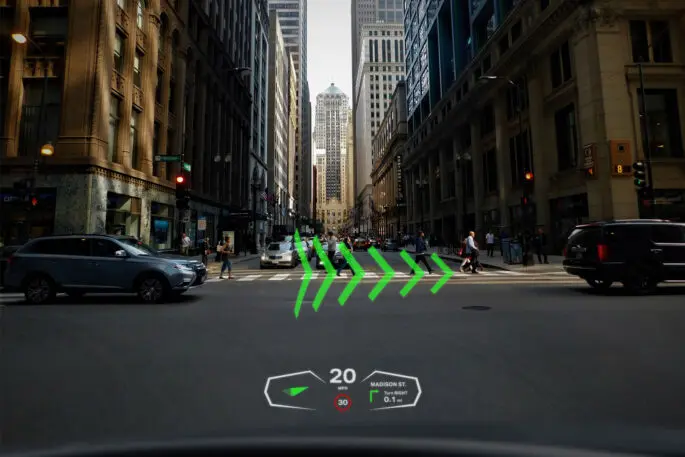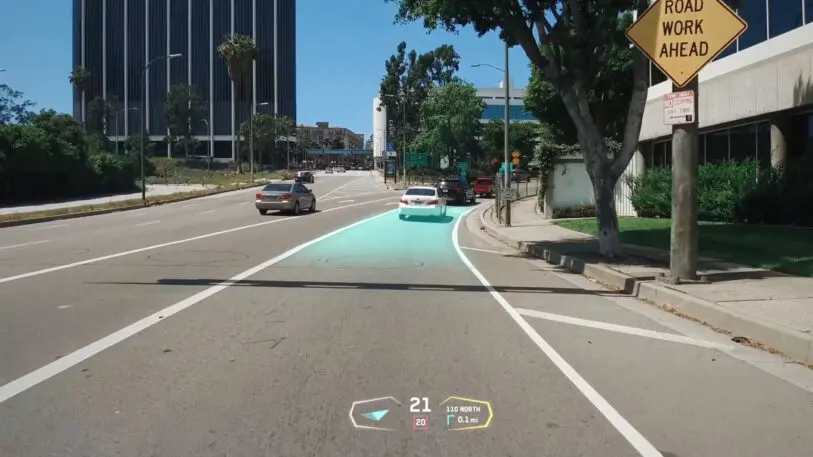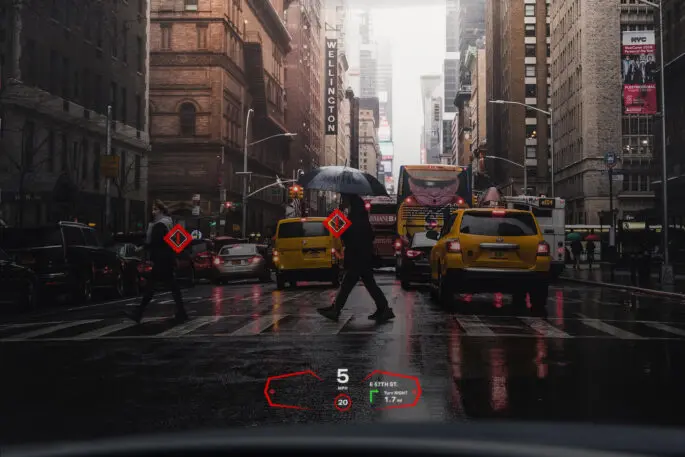A little-known company called Envisics is getting a hand from major auto industry players as it tries to bring holographic displays to cars.
The startup is raising $50 million from Hyundai Mobis, General Motors Ventures, SAIC Motor, and Van Tuyl Companies. GM says it could use the technology in future electronic vehicles such as the Cadillac Lyriq, while Hyundai Mobis, a major automotive parts supplier, says it will work with Envisics to mass-produce augmented reality displays by 2025.
With holography, Envisics says it can render visuals that seem to appear in front of the car. This could be used to highlight pedestrians, stalled vehicles, or turn-by-turn directions as 3D overlays. It could also provide a bridge to self-driving cars, pointing out specific hazards that require human drivers to retake the wheel.
“We can paint that information directly on reality itself,” says Jamieson Christmas, Envisics’s founder and CEO.
More than a projected image
Today, some vehicles can already project images onto their windshields, showing information such as the current speed limit or turn-by-turn directions. Some systems, such as Mazda’s “Active Driving Display,” even offer some basic augmented reality elements, such as warnings when drivers are drifting out of their lane.


A rocky road
Envisics’s technology is already installed in about 200,000 cars from Jaguar Land Rover, but they’re using a much cruder version of the product that can only show vehicle information such as speed in front of the driver. The road to Envisics’ second-generation product, which it’s developing now, has been a lot bumpier.

But instead of pushing ahead on its own, Two Trees decided to sell itself to Daqri, another startup that was working on augmented reality headsets to compete with the likes of Magic Leap and Microsoft’s HoloLens. The idea was that Two Trees’ expertise in holograms would give it an edge in AR hardware, but Christmas says he quickly realized the company should have stayed focused on cars.
“Within months of being acquired, the automotive companies came back and said, ‘Guys, you’ve made a mistake. This holographic technology really is the future of displays in cars, and we’d like you to reconsider,'” Christmas says.
He convinced Daqri to spin off his team, which became Envisics in 2017, and it’s been heads down building a second-generation product for cars ever since. (Daqri, meanwhile, shut down last year amid a broader reckoning for AR headsets and sold its assets to Snap.)
Interest from automakers
Envisics started demoing its second-generation tech at the CES trade show in early 2019, and the response was positive enough that Christmas pushed for another round of investment, this time bringing the automotive industry into the fold. By getting on board early, those companies can play a bigger role in developing the product and making it work with their future cars.
“They clearly recognize that we’ve got some very unique technologies, which in the future will provide them with market differentiation that they can’t find anywhere else,” Christmas says.
Envisics’s tech won’t be exclusive to its investors, though. Christmas says the startup is in “varying levels of conversation” with 11 prospective partners, and it will start appearing in premium SUVs and other large vehicles within a few years. Envisics is also developing a third-generation holographic system that will fit in smaller vehicles, which it hopes will be ready around 2025.


“It would be able to draw your attention to what it’s unclear on and say, ‘You have control, three, two, one, go,'” he says. “The ability for you to immediately understand why the car is giving you control is really a significant advantage.”
Recognize your brand’s excellence by applying to this year’s Brands That Matter Awards before the early-rate deadline, May 3.